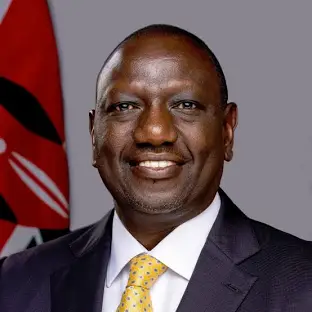President William Ruto of Kenya has emerged as the world leader with the highest salary as a percentage of the nation’s GDP per capita, according to recent data. The findings reveal that Ruto’s annual salary in 2023 was a staggering 1,993% higher than Kenya’s GDP per capita, a ratio unmatched by any other head of state globally.

The significant disparity between Ruto’s earnings and the country’s economic output positions him at the top of a global list of leaders’ salaries when compared to their countries’ GDP per capita.
Following Ruto on the list are some notable figures, including Lawrence Wong of Singapore, whose salary is 1,158% of the GDP per capita of Singapore, and Samia Suluhu Hassan of Tanzania, with her salary at 1,087% of the Tanzanian GDP per capita. These figures underline a global trend where leaders’ compensation packages stand in sharp contrast to the economic realities faced by their nations.
Other heads of state with salaries significantly higher than their countries’ GDP per capita include Cyril Ramaphosa of South Africa (1,053%), Ghana’s Nana Akufo-Addo (651%), and Australian Prime Minister Anthony Albanese (584%). European leaders, such as Viola Amherd of Switzerland and New Zealand’s Christopher Luxon, also feature on the list, with their salaries pegged at 581% and 566% of their respective countries’ GDP per capita.
The stark differences between the salaries of these world leaders and their countries’ economic output raise important questions about income inequality and the disparity between political leadership and the broader population’s economic well-being. Critics argue that while leaders play pivotal roles in shaping national policies, their pay packages should reflect the average economic circumstances of their citizens, rather than outpacing the average income by such wide margins.
For Ruto, the revelation of his significant salary relative to Kenya’s GDP per capita has sparked conversations around political accountability and fiscal transparency in the country. Advocates for fiscal reforms in Kenya have called for a reevaluation of the compensation structure for public officials, with a focus on reducing the wealth gap between government leaders and the general population.
As the global debate continues, the issue of political salaries relative to national economies remains a point of contention, with some calling for more equitable pay practices for government leaders, while others argue for the necessity of competitive compensation to attract qualified individuals to public office.
The full list of world leaders’ salaries as a percentage of GDP per capita is as follows:
- William Ruto (Kenya): 1,993%
- Lawrence Wong (Singapore): 1,158%
- Samia Suluhu Hassan (Tanzania): 1,087%
- Cyril Ramaphosa (South Africa): 1,053%
- Nana Akufo-Addo (Ghana): 651%
- Anthony Albanese (Australia): 584%
- Viola Amherd (Switzerland): 581%
- Christopher Luxon (New Zealand): 566%
The conversation is likely to continue as the world grapples with the question of how much is too much when it comes to the compensation of political leaders.


Halo good afternoon am calling from Kampala Uganda am silo please kindly provide the actual money in dollars not in percentages per GDP because that’s when the lay man can understand the heart and ration of his or her leadership